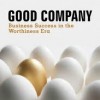Repuception! Or one half of the apple…
Repuception! A concept that I coined… In 1990’s, I had issues about the fact that the public relations domain was fully exhausted, and during a trip to London, I thought about marrying the concepts of “Reputation” and “Perception”. For me, that was the peak point to be reached in communication management, because reputation, and perception which leaned its back against reputation, could simultaneously rise to eminence… Back in those days, there was cutthroat competition particularly among international PR networks. Especially the major networks known as the top 10, were aiming below the belt using “Reputation” and “Perception” arguments. The way they communicated the two concepts to the customers involved the “slander” of either one over the other. They had agreed over the term “Management”, yet it was chaotic whether it should be “Reputation” or “Perception” to precede the term. Therefore, clients were confused: Should they focus on “Reputation” or “Perception”?




 I, on the other hand, could not make any sense out of this conflict. Especially corporate brands could never make “Perception” their issue, yet “how they were perceived” vis-à-vis the relevant stakeholders required some strategic improvement. In other words, perception management needed to be incorporated in the process. However, this perception could only work as long as it was supported with reputation. To put it differently, perception without the underlying dynamics of reputation did not really function. It could not be lasting, and furthermore, it engendered a corporate identity problem that required some modification and repair. Take a look at the giants of industry leaders at the 2000’s; BP Mexican Gulf crisis, the strike of Wal-Mart employees, Mattel’s problems with the production of Barbie dolls, Toyota recalling more than 10 million cars upon the demand of the US government; the conflict that erupted between the world giants Bridgestone/Firestone and Ford had transformed into animosity and ended up in a full-fledged crisis. That was because the parties had attempted to manage communication via “Perception”! Let’s take a moment and move away from the world of corporate brands.
I, on the other hand, could not make any sense out of this conflict. Especially corporate brands could never make “Perception” their issue, yet “how they were perceived” vis-à-vis the relevant stakeholders required some strategic improvement. In other words, perception management needed to be incorporated in the process. However, this perception could only work as long as it was supported with reputation. To put it differently, perception without the underlying dynamics of reputation did not really function. It could not be lasting, and furthermore, it engendered a corporate identity problem that required some modification and repair. Take a look at the giants of industry leaders at the 2000’s; BP Mexican Gulf crisis, the strike of Wal-Mart employees, Mattel’s problems with the production of Barbie dolls, Toyota recalling more than 10 million cars upon the demand of the US government; the conflict that erupted between the world giants Bridgestone/Firestone and Ford had transformed into animosity and ended up in a full-fledged crisis. That was because the parties had attempted to manage communication via “Perception”! Let’s take a moment and move away from the world of corporate brands.
Let’s have a look at the events that have been marking the agenda inTurkey for the last couple of years. Then, let’s apply the lessons learnt to the brands.
In today’s political scene, we frequently hear the concept of “perception operation” in politics; in fact, it has become a routine element of our daily lives. This concept is merely a hollow, far-from-credible “short-term gains” in politics discourse that is doomed to be brought down a peg in the near future! When we turn on the TV, and hear about “perception operation”, read about “perception operation” in the newspapers and in books about current developments …
Are we talking about perception or reputation? Everyone is confused!
First, let’s see where the conflict arises from. We say that “Perceptions are real and it is these perceptions that manage life”, and this is a valid argument. However, it only gains meaning and value if we take into account another observation: “Truth has the habit of revealing itself one way or another”.
Let us continue with an example from today’s political scene. “The political revenge brands” named “Balyoz” and “Ergenekon” in Turkey were products of a perception operation. They were at a premium when they were being managed. However, as the truth behind this perception came to the surface over time, it “downed on” the necks of those who created those brands!
 These developments represent a sheer replica of what happened in the US with Enron in the beginning of 2000’s! A company worth 37 billion USD owing to the “perception” it crafted and managed, turned into an 80-cent company overnight! That is because truth had the habit of revealing itself one way or another!
These developments represent a sheer replica of what happened in the US with Enron in the beginning of 2000’s! A company worth 37 billion USD owing to the “perception” it crafted and managed, turned into an 80-cent company overnight! That is because truth had the habit of revealing itself one way or another!
In the political realm, there is a “habit” of trying to return the reputation that is damaged as a result of the crafted perception. In a similar vein, the politicians who were sent to the gallows during the 1960 coup d’état and were “slandered” back in those days had their names given to important buildings in Turkey after several years, with a motive to “return their reputation”. Or in the reverse scenario, the leaders of the 1980 coup had their names given to educational institutions of the time, and now those names are being replaced with new ones.
Yet, the world of brands knows no such options. What matters whether Enron’s reputation is returned or not?
However, there are important lessons for the world of brands: Perception and reputation issues resemble the stock market. When you invest in perception and manage it effectively, the stock market will rise and a higher worth will be attained. However, although we argue that perceptions are real, they need to be built on the pillar of “truth”. Otherwise, like it was the case with Enron, the stock market will react as required, and in a matter of moments you will turn into a “two-penny” company!
In fact the critical question is, do investors invest in the corporate “perception or reputation”?
That was the point where I got stuck too, back in those years. Those were years when there was no Google, Twitter or Facebook, and coming up with a “coined” concept like Repuception was no solution. Those were the years when reputation research rather than perception research had its heyday. However, it was not the researchers who experienced that; it was the strategic communication and public relations people! They had a very simple argument for commissioning reputation research rather than perception research for corporate brands: They could learn how they were perceived by which stakeholder through “perception research”. However, when this perception is linked to the realities of the brand in question, does this contribute to the “corporate reputation that is of inestimable worth”?
That is the question! Or we could ask the question in reverse order: Which reputation dynamics lead to the creation of such perception? Is this good or bad? Is it sufficient or not? Is it meaningful from the perspective of business outcomes? How about the situation with competitors then? The responses to such questions also reside within the realm of reputation research rather than perception research.
Despite the fact that it is a coined term, Repuception triggered a different debate at the international level. It was even taken “seriously” in academic circles in Brazil and India. I received few yet meaningful e-mails in terms of their content and reflections.
In 2001, at a Reputation Management conference held in Boston by the Reputation Institute, I opened to discussion my thesis based on a research with 42 stakeholders. It was quite interesting to see how the different perception of each stakeholder affects which reputation dynamics, and which business outcomes these have an impact on.
Let’s take a look at the essence of the matter now; reputation is a concept built on “values”. It is debatable on which basis perception is built.

 Right in the middle of the “Gezi protests” in Turkey in 2013, the stairs painted in the colors of the rainbow in Cihangir, Istanbul. Let’s read this snippet from a news article , which is a current and nice reflection of the relationship between perception and reputation:
Right in the middle of the “Gezi protests” in Turkey in 2013, the stairs painted in the colors of the rainbow in Cihangir, Istanbul. Let’s read this snippet from a news article , which is a current and nice reflection of the relationship between perception and reputation:
“The stairs that lead from Fındıklı to Cihangir, Istanbul were painted in the colors of the rainbow flag that symbolizes the LBGT movement. Everybody wondered who painted the stairs and why… Based on the information at bigumigu.com, the founding father of the project is Hüseyin Çelikel. Hüseyin Çelikel is a street bazaar seller and a café owner who was bothered by the dilapidated and worn-out looks of these stairs that enjoy a high level of daily traffic, and he decided to paint them. While the community and storeowners in Cihangir were pressing the 
 municipality for a better appearance and restoration of the steps, Hüseyin Bey takes action and three of his friends, Ismail, Melodi and Semih, run for help. In 4 days, they paint a total of 200 steps, which ends up with the huge attention of the social media and the passersby. Later, the people in the neighborhood also support him. This is a project that Hüseyin Bey pays for out of his pocket and contrary to the customary practice, there is no street painter involved. Yet, it is a story that attracts a lot of attention. As the stairs are being painted, those who were unable to provide any other kind of support went to the grocery store to buy food and beverages for those who worked. The naive goal behind the project was to bring people together to create something nice and to show the municipality that they should be capable of doing better than that.”
municipality for a better appearance and restoration of the steps, Hüseyin Bey takes action and three of his friends, Ismail, Melodi and Semih, run for help. In 4 days, they paint a total of 200 steps, which ends up with the huge attention of the social media and the passersby. Later, the people in the neighborhood also support him. This is a project that Hüseyin Bey pays for out of his pocket and contrary to the customary practice, there is no street painter involved. Yet, it is a story that attracts a lot of attention. As the stairs are being painted, those who were unable to provide any other kind of support went to the grocery store to buy food and beverages for those who worked. The naive goal behind the project was to bring people together to create something nice and to show the municipality that they should be capable of doing better than that.”
This initiative that instantly pervaded the entire society and ended up with stairs painted all across Turkey in the colors of the rainbow, is in fact about “our values” that we had been longing for such a long time… All of a sudden, it found supporters throughout the country, and that is because the colors of the rainbow stepped beyond the borders of the LBTG movement that has been the real owner of those colors in the past few years. Or, it is because the issue goes beyond Hüseyin Çelikel’s desire to make those gray stairs look prettier. In other words, those colors now represent peace, freedom, and human rights.
The thirst for these concepts finds an expression in those stairs in Cihangir, Istanbul. The perception is created around those colors, and the meaning behind this perception is the “values” we cherish.
If the same stairs were to be painted in 1970s, it would be questionable whether they would attract the same level of attention or not. Although today reputation management may be associated with several parameters that are blended with values, its application in life is now about “management quality”.
In very simple terms; the words that are chosen to answer the question of “ ‘What kind of’ a company/brand/institution are you?, reflects the condition of “management quality”. And that, of course, reflects “reputation” …
 In the past, they used to carry out “Good Company” research in Canada. Actually, the research held by the Canadian Business for Social Responsibility (CBSR) represented “Repuception” itself. They questioned the infrastructure of “a good company” on the basis of economic, environmental and social sustainability issues, and ascending values such as ethics, transparency, responsibility, and accountability. In other words, the companies in the business world should be managed successfully around these concepts that constitute the dynamics behind their reputation, so that the output of all this will be their reflection (perception) in the society!
In the past, they used to carry out “Good Company” research in Canada. Actually, the research held by the Canadian Business for Social Responsibility (CBSR) represented “Repuception” itself. They questioned the infrastructure of “a good company” on the basis of economic, environmental and social sustainability issues, and ascending values such as ethics, transparency, responsibility, and accountability. In other words, the companies in the business world should be managed successfully around these concepts that constitute the dynamics behind their reputation, so that the output of all this will be their reflection (perception) in the society!
A coined term such as Repuception takes us to a level of engagement that could be defined as the “problematic” of this century, taking into account the development in information technologies provided by the Internet.
Because the real issue is “trust”!
Who are we going to trust, and why, and to what extent? Are we going to attain this trust with perception or reputation or the joint performance of both?
The underlying reason why we are so much engaged with this reputation and perception business is to gain the trust of “some people”. In fact, before the social stakeholder concept came about, that was easy to solve with “target audience”. In fact, until 1990’s, marketing and sales-based strategies were managed on that basis. However it was seen that earning the trust of the “consumer” segment that is defined as the target audience goes further beyond the dimensions of the balance between product quality and price.
Today, when a consumer reads the label on a product at a supermarket, he or she questions his/her “trust” in the manufacturer behind that product. That is because the “single-hat consumer”, that is “target audience” of the past, walks about the market wearing several hats today. As for his/her outer appearance, he/she is a consumer, but at the same time he/she is an employee, investor, civil society activist, opinion leader, a blogger…
It all adds up to one single person may be, but that person manages the reputation and perception of the brand.
During the years when we were trying to get stronger in our career, brands used to be managed by the professionals in the companies that manufactured them.
However, things have changed now. Now, it is the ordinary citizens on the streets and the supermarkets who manage brands! That was not calculated. The business world resisted this until the 2000’s. They did not want to surrender their brands to the “nondescript people” in the streets and markets.
But then “reputation” came into the picture. They realized that those “brands without reputation” were doomed to disappear in the long run.
 Perhaps the best example of that is the acquisition of the US ice cream manufacturer Ben & Jerry by Unilever in 2001. On one side of the deal there were Ben and Jerry, keen social activists that had given the brand its name. They had produced the first social reporting in the world in 1989 and they were among the first examples of sustainability principles in company management.
Perhaps the best example of that is the acquisition of the US ice cream manufacturer Ben & Jerry by Unilever in 2001. On one side of the deal there were Ben and Jerry, keen social activists that had given the brand its name. They had produced the first social reporting in the world in 1989 and they were among the first examples of sustainability principles in company management.
On the other side was a giant transatlantic that was quite distant to such business back in those years! After the acquisition, the adaptation of both companies to each other’s culture summarizes everything that could be told regarding this triangle of reputation-perception-trust.
On one hand there was Ben & Jerry with limited opportunities despite its goals to reach out to the global marketplace, and on the other there was Unilever: A company that had missed the sustainability train when its competitor P&G had signed the Global Compact of the UN, and had secured the ticket to get on the next train for sure!
Ethical trade certificate, organic raw material suppliers, environment-friendly packaging materials, premium payment systems in milk purchase, policies against feeding cows hormone-based feed, special care to investing in underdeveloped regions, transferring 7.5% of pre-tax revenues to donations with a social cause were concepts that Unilever was not familiar with until then. At the same time, these were the main inputs behind Ben & Jerry’s success as the most prestigious and leader brand in the ice cream market.
 Meanwhile, what lacked in Ben & Jerry yet was abundant in Unilever as a result of years of experience was more than enough to meet the expectations of the investors: An effective financial management, a human resources structure that could adapt to the dynamics of different markets, and other advantages of being a global company. In my opinion, today, the reason behind the successful performance of Unilever and the brands under its umbrella in line with sustainability principles is this acquisition operation that dates back to the beginning of 2000s.
Meanwhile, what lacked in Ben & Jerry yet was abundant in Unilever as a result of years of experience was more than enough to meet the expectations of the investors: An effective financial management, a human resources structure that could adapt to the dynamics of different markets, and other advantages of being a global company. In my opinion, today, the reason behind the successful performance of Unilever and the brands under its umbrella in line with sustainability principles is this acquisition operation that dates back to the beginning of 2000s.
Unilever saw that the values that are changing in the society at a global scale are concentrated around the issue of “sustainability” and aligned its strategy accordingly upon this acquisition. It has never pushed to the periphery the fact that this was at the same time a move that involved a reputation and perception management dimension. On the contrary, it has supported this strategy with profound policies that were developed to include all stakeholders. In other words, it applied the concept of “Repuception”!

